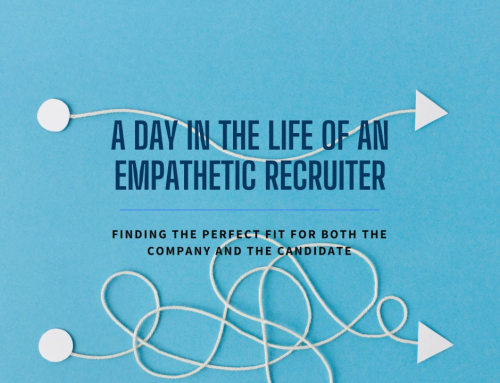by Anthony Ysasaga July 28th, 2020
The definition of a sourcer varies from company-to-company. The function of a sourcer is to develop pipeline candidates for a recruitment process, but sourcing is much more than being able to string together a good boolean search. Here are some definitions of a Sourcer:
- Researcher
- Researcher, prospect identification
- Researcher, prospect identification, outreach
- Researcher, prospect identification, outreach, screener
- Researcher, prospect identification, outreach, screener, submission, scheduler, managing ATS candidate disposition
A good sourcer understands the need to market to prospects effectively. Developing a good rapport with prospects is key to any successful campaign. Realistically, the majority of prospects will not fit the qualifications of the role sourcers are targeting. However, maintaining those relationships and properly closing out non-qualified candidates will allow the sourcer to manage a database of potential candidates for future roles.
Being a sourcer, is the same as being a good detective. Locating qualified prospects is what a sourcer does best. I have listed standard sourcing methods below and would suggest the many sourcing articles on SourceCon’s website:
- Social Media outlets such as Facebook, GitHub, Twitter, Stack Overflow
- Deep Web Searches/General Basic Boolean Searches
- LinkedIn Lite, Basic or Recruiter
- Other outlets such as SeekOut, ZAPinfo, Hiretual, HireSolved
I Found What I’m Looking For, Where Do I Go Now?
The real joy of sourcing, from my perspective, is the candidate outreach. A well-crafted outreach will not only capture your prospects attention but will also provide the “foot in the door” moment for your campaign. The success of turning a prospect into a candidate depends on this message. I always try to keep it short, simple, and to the point. Never make the message about you or make it sound like a sales pitch. Personalize your message and put something in your message about the prospect’s profile, that always gets their attention!
Below are some things NOT TO DO that will yield low results:
- Inmail or email message that contains too much information and detail.
- Bulk emails or bulk inmails sent without reviewing details of the prospect’s profile
- Sending an message that makes assumptions about the prospect (Like a company that is going through layoffs)
- Stalking your prospect by sending the same message over and over
I’m sure there are some additional items I missed, but I think you get the point. Your outreach message should be meaningful, thoughtful, real, and should spark an interest with the prospect. I have put together a list of message suggestions below:
- Include something unique about your target prospect. Talk about their University, location, specific accomplishments anything to let them know that you took the time to review their profile.
- Include some levity or anything that may capture your prospect’s interest.
- Let your prospect know something about your company that is special or interesting, not public knowledge.
- Talk about new technology, techniques, or systems utilized.
- Discuss opportunities for growth, promotion, or equity sharing.
According to a SourceCon survey, it takes approximately 3-6 touches (emails or calls) before you can solicit a response. Initial contact is a crucial step in converting a prospect to a candidate.
Now That I Have Your Attention – Time To Schedule A Call
As soon as your prospect responds, please don’t waste time getting back to them. The prospect took time out of their day to get back to you, the least you can do it respond within the first hour.
The most important advice I can provide is that you are attempting to convert the prospect into a candidate during the initial conversation. The conversation should include some of the following topics below:
- Reason for looking.
- Discuss what the candidate like about their job and what they don’t like.
- Talk about the candidate’s desires for a move.
- Probe and ask open-ended questions about their motivation and what gets them excited about their job.
- Ask the candidate about their passions and hobbies.
It’s important to discuss the challenges of the position you are supporting openly. It’s also critical to discuss the benefits of working for the company. Discuss why you chose to work there and what you love most about the company. When you talk about the opportunity, discuss the training, learning, development of new skills, career growth, and benefits.
If you want to develop some structure around setting up a template for a call, it should look similar to this:
- Prep for the call by reviewing the prospect’s profile or resume and discuss anything that can provide good talking points for you both.
- When you first engage the candidate, thank them for taking time out to speak with you. Ask why they were motivated to respond, what’s important to them personally.
- Talk about the opportunity and be able to connect the dots regarding the candidate’s needs/wants. Make sure it’s a good fit for both sides.
- Take the time to move the prospect over to a candidate, get them involved in the process by leading them. Don’t drag them into this unwillingly.
- Discuss the interview process – it helps provide the candidate comfort knowing the details of the interview process.
- When you submit the candidate for consideration, stay involved, and help them by providing them an interview prep. Provide good insights on what to expect for their interview.
Final Thoughts
Ensure that you are well-versed in understanding the company you represent so that you can discuss the available opportunity in detail so that you can increase the candidate’s interest in the role itself. The higher the interest level, the more likely you will convert this candidate to a successful hire.







Leave A Comment